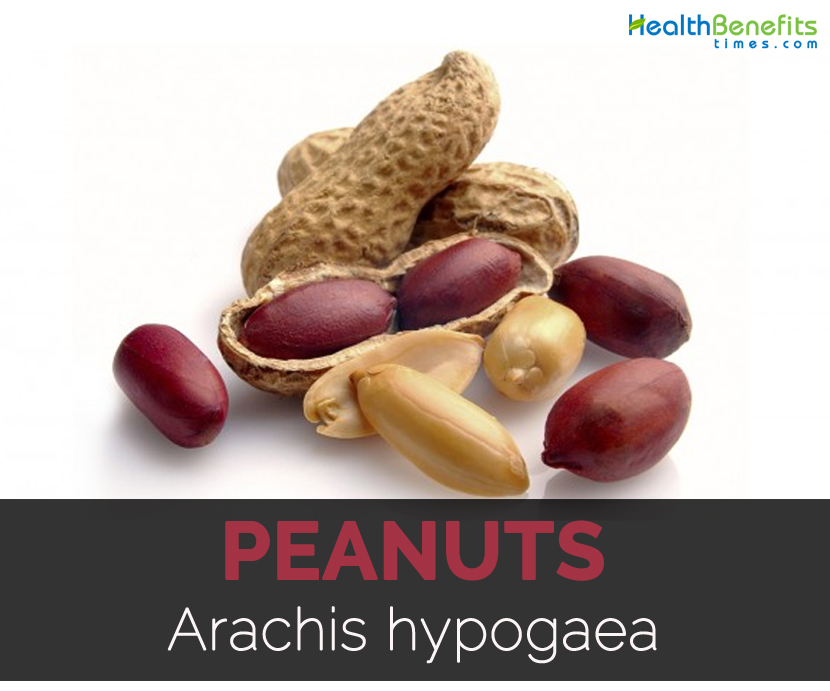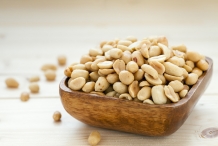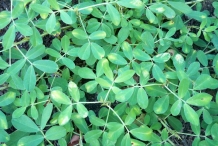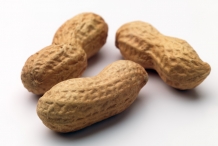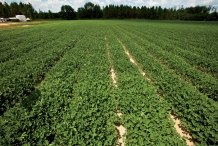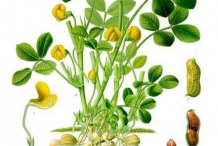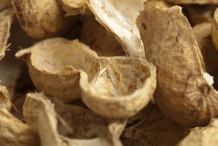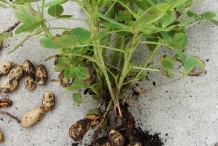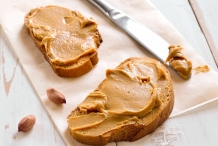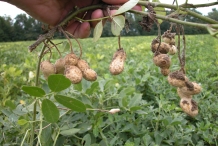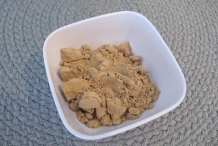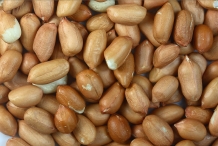| Peanuts Quick Facts |
| Name: |
Peanuts |
| Scientific Name: |
Arachis hypogaea |
| Origin |
Peanut is native to South America. It is likely to be domesticated in Paraguay or Bolivia that have greatest diversity of wild varieties of Arachis species. Today, it is cultivated widely throughout the tropics, subtropics and warm temperate areas. |
| Shapes |
Oblong, inflated legume, 2 to 5 × 1 to 1.3 cm |
| Flesh colors |
White, cream |
| Calories |
828 Kcal./cup |
| Major nutrients |
Total Fat (205.40%)
Copper (185.56%)
Manganese (122.78%)
Vitamin B3 (110.10%)
Vitamin B9 (87.50%)
|
| Health benefits |
Good for heart health, Prevention of gallstones, Prevents cancer, Improves memory, Helps fight depression |
Peanuts, typically referred to as groundnuts, monkey nuts, pig nuts, etc belong to the Fabaceae (bean) family. Peanuts, Arachis hypogaea is really a legume species, and indigenous to South America, Mexico as well as Central America. A yearly herbaceous plant, which grows nearly to ground level, along with very slim stems, leaves which are opposite as well as pinnate along with four leaflets, flowers which are pea-shaped, and fruits (legumes) which are essentially seeds which sprout and mature underground. At present, its cultivated world over in climates that are favorable because of its growth; long warm periods and lots of rain.
As the stalks grow, they start to droop to the floor. Once the pods start to form, they gradually force their way underground, eventually maturing underneath the soil, forcing the farmer to dig the netted, tan colored pods up. It’s possible that peanuts developed this growth habit as a method of defense against hot tropical sun, because they have got thin pods. As soon as the peanut pods are gathered, the plant is taken away, and typically utilized for animal fodder.
Despite their name, peanuts usually are not in fact nuts, they’re legumes. In many cookery uses, peanuts are referred to as nuts since they act a lot more like nuts in the kitchen compared to other legumes, like lentils and beans. For those who have nut allergies, the distinction is especially essential, since many people with nut allergies can consume peanuts securely. Conversely, individuals who are hypersensitive to peanuts can frequently consume nuts.
In many parts of Africa, peanuts tend to be more often called groundnuts, a reference to the underground location favored by the pods. Peanuts perform an important dietary role in several parts of Africa, because they are loaded with protein as well as healthy fats. In certain parts of Africa, peanuts signify a considerable amount of the protein readily available for consumption. Within the American South, peanuts are known as “goobers,” a variant of the Kikongo word, nguba. There are many essential roles for peanuts in several areas of the world. A large percentage of the annual peanut harvest is pressed to yield peanut oil, a pale yellow, neutrally flavored oil having a high smoking point. Peanut oil is fantastic for frying, and is also traditionally used in several nations for this function. The nuts may also be ground into peanut butter, a creamy spread that is well-liked by people of every age group. Peanuts are available for sale whole too, to be consumed plain, sprinkled onto food, or even contained in numerous dishes.
Health Benefits of Peanuts
These nuts (or rather legumes) really are a super food with regards to their health benefits. In reality, they’re an essential source of nutrition in underdeveloped nations. Their numerous health advantages are listed below.
1. Good for heart health
Peanuts are a fantastic source of Vitamin E, niacin, folate, protein as well as manganese all of which are recognized to encourage heart health.They’re also full of monounsaturated fats, the kind of fat which is emphasized in cardio protecting diets. Research has even demonstrated that a higher monounsaturated diet which emphasized peanuts as well as peanut butter decreased coronary disease risk by approximately 21%.
2. Prevention of gallstones
Gallstones really are a illness a problem that always occur in females. There are numerous cures to it, there are lots of safety measures too; yet the yummiest safety measure appears to be that of consuming peanuts. We see that even here peanuts show their magic like a survey carried out over eighty thousand women has demonstrated that those who consume peanuts or even peanut butter or any source of peanuts daily or perhaps in their daily routine appear to have nearly a 25% lesser chance of getting gallstones. This really is astonishing for just one ounce of peanuts is required daily to avoid gallbladder illnesses. You might consume a sand that or in any form to obtain the nutrition contained in a whole wheat bread along with proteins, fibers and what not.
3. Prevents Cancer
Legumes just like peanuts have a superior power of a form of phytosterol known as beta-sitosterol (SIT). These types of phytosterols prevent cancer simply by inhibiting tumor development. An investigation carried out in the United States noticed that men and women who consumed peanuts at least two times per week correspondingly had 27% and 58% lower chance of getting colon cancer.
4. Improves Memory
Peanuts are usually called the “brain food” since they consist of Vitamin B3 or even niacin that enhances brain functioning as well as improves memory. Additionally they include a flavonoid known as resveratrol which will help in enhancing blood circulation towards the brain simply by 30%.
5. Help Fight Depression
Serotonin is probably the key brain chemicals involved with mood regulation. Insufficient release of serotonin by the nerve cells within the brain is accountable for triggering depressive disorders. Peanuts consist of an amino acid known as tryptophan that helps the release of serotonin, therefore assisting you combat depression symptoms. It may further raise serotonin anti-depressant effects when there is an elevated serotonin development within the blood.
6. Beneficial for Children
Children need extra nutrition within their growing years to lead a healthy life thereafter. Peanuts are a fantastic method to obtain dietary protein made up of fine quality amino acids that are vital for growth and development.
7. Aids Weight Management
Although it seems unusual, frequent usage of nuts is assigned to reduce chance of putting on weight. The mixture of fiber, fat as well as protein content in peanuts causes them to be a high satisfied food. Therefore, they are able to keep you full for extended and therefore reducing your hunger. Also, they are great sources of energy that assist in boosting the metabolic rate. These qualities play a role in weight-loss.
8. Prevents Alzheimer’s
Research has demonstrated that usage of niacin rich foods just like peanuts lowers the chance of developing Alzheimer’s disease by 70%. A quarter cup of peanuts can offer almost a quarter of the suggested daily value of niacin.
9. Fertility enhancement
Due to the fact that peanuts include folate, a substance that boosts fertility, it really is extremely sensible for ladies to modify in their diets. Peanuts include a sufficient quantity of folate within them as well as research and considerable studies have shown that a every day consumption of 400 micrograms of folic acid (present in folate) boosts fertility in addition to offers excellent immunity to the child being born. Likelihood of miscarriages reduce significantly. Also abnormality and chances of neural or even physiological condition risk greatly. Therefore a woman need to particularly eat peanuts if she would like to get pregnant and also throughout her pregnancy too.
10. Prevents hair loss
Vitamin C contained in peanuts assist in the production of collagen, which will keep the tissues within our hair together. They likewise have l-arginine which is often used for treating male pattern baldness, as well as omega 3 fatty acids that fortifies our follicles of hair and promotes hair growth.
12. Protects Against Age-related Cognitive Decline (Vitamin B2)
Research participants have demostrated that those who’ve a consumption of the most niacin-rich foods just like peanuts were 70% less inclined to have developed Alzheimer’s disease. A quarter cup each day of peanuts can easily already offer nearly aquarter of the every day required value for niacin.
https://www.youtube.com/watch?v=svriTsZ_zeg
Origin and History of Peanuts
The peanut plant most likely originated from Brazil or Peru, even though no fossil records really exist to demonstrate this. However for so long as individuals have been making pottery in South America (3,500 years or so) they’ve been making jars shaped like peanuts as well as decorated along with peanuts.
European explorers very first identified peanuts in Brazil. The Incas utilized peanuts in sacrificial offerings as well as entombed them with mummies to provide the spirit in the afterlife. Tribes in central Brazil also ground peanuts along with maize to create an invigorating beverage for celebrations.
The Portuguese transplanted peanuts to West Africa whilst the Spaniards introduced them to the Philippines. Peanuts had been a staple of the African slaves on the voyages to America . In reality, the African word for peanut, “nguba,” soon was changed into “goober.”Due to its introduction to America by slaves, the peanut was at first relegated to an inferior status as food for the poor as well as livestock. Ile Civil War introduced peanuts to Northerners, and both Armies subsisted on this nutritious protein source.
By the turn of the century, botanist George Washington Carver reached Tuskegee Institute in Alabama farmers were faced with boll weevils decimating their cotton crop-which was their mainstay-Carver promoted crop rotation practices and also the farming of peanuts. In addition, he developed a lot more than 300 uses for peanuts from recipes to new items as well as non-food uses.
Soon, mechanized machinery simplified peanut harvesting as well as processing. Street vendors started selling roasted peanuts from carts, as did vendors at circuses and baseball stadiums.
Peanuts as well as peanut butter became a fundamental element of the Armed Forces rations in World Wars I and II. Their popularity grew with the development of the U.S. population.
Today peanuts lead over four billion dollars to the U.S. economy every year. Even though the U.S. is really a main exporter of edible peanuts to numerous nations all over the world, they’re expanded in countries as far flung as Africa, China, Australia and Argentina.
Types of Peanut
Seven states account for roughly 99% of all peanuts grown within the U.S. Georgia (41%) grows the major proportion of all peanuts accompanied by Texas (24%), Alabama (10%), North Carolina (9%), Florida (6%), Virginia (5%), and Oklahoma (5%). Roughly 25,000 peanut farmers within the major producing regions.
The peanut growing regions of the U.S. have direct access to port facilities of the Atlantic Ocean and also the Gulf of Mexico.
U.S. peanuts fall under four basic types: Runner, Virginia, Spanish and Valencia. Each one of these peanuts is exclusive in size as well as taste.
1. Runner
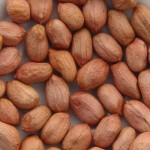
Runners have become the dominant peanut type cultivated within the U.S. because of the introduction during the early 1970’s of a new variety, the Florunner, that was responsible for a spectacular boost in peanut yields. Runners have got quickly gained wide acceptance due to their appealing kernel size range; a higher proportion of runners are utilized for peanut butter. Runners, cultivated mostly in Georgia, Alabama, Florida, Texas and Oklahoma, account for 80% of total U.S. production.
2. Virginia
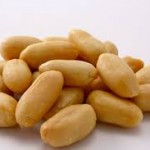
Virginias have the biggest kernels and account for the majority of the peanuts roasted as well as consumed as inshells. When shelled, the bigger kernels are sold as salted peanuts. Virginias are generally cultivated mostly in southeastern Virginia and northeastern North Carolina and West Texas. Virginia-type peanuts account for about 15% of total U.S. production.
3. Spanish
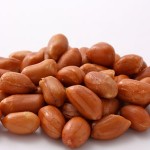
Spanish-type peanuts have got smaller sized kernels engrossed in a reddish-brown skin. They are utilised mainly in peanut candy, along with considerable amounts utilized for salted nuts as well as peanut butter. They’ve greater oil content compared to other kinds of peanuts that is beneficial whenever crushing for oil. They’re mainly cultivated in Oklahoma and Texas. Spanish-type peanuts account for 4% of U.S. production.
4. Valencia
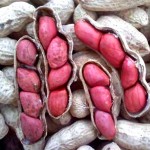
Valencias normally have three or more tiny kernels into a pod. They’re extremely sweet peanuts and therefore are generally roasted and sold in the shell; they’re great for fresh use as boiled peanuts. Due to the greater requirement for other varieties, Valencias account for lower than 1% of U.S. production and therefore are grown mostly in New Mexico.
Storage of Peanut
Peanuts have got a short life expectancy, primarily due to the high amount of oil they include, and high temperatures might cause the fat within the nuts to become rancid. Stored sealed, in the dry place below 70 degrees Fahrenheit, they’ll most likely last a week. They keep going longer when refrigerated, and you may also freeze them indefinitely in the enclosed pot.
Peanut Recipes
Consuming peanuts is extremely simple. You can just toss a few roasted peanuts within your mouth whenever busy at the office or with jobs. Peanuts may also be effortlessly prepared as tasty dishes with a few simple recipes.
1. Peanut Salad
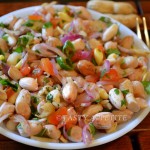
It is really an incredibly healthy recipe that may be consumed like a pre-lunch snack or even to satisfy those mid-evening food cravings.
Soak a fistful of raw peanuts overnight. Drain and store them covered with muslin cloth or perhaps in a bowl covered with a dish. As soon as the legume sprouts are well-formed, combine them with chick pea sprouts or even green gram (green mung) sprouts. Include sliced tomatoes, grated carrot as well as fresh coriander leaves. Season it along with salt and lemon juice. Your healthy peanut salad is prepared.
2. Peanut and Tomato Chutney
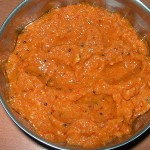
Blanch two tomatoes and make a paste along with green chilies. Roast and grind a cup of peanuts. In the pan heat peanut oil as well as add mustard seeds and take away from heat once the seeds start to splatter. Add fresh curry leaves and then add some tomato-chili paste. Cook for some minutes and add peanuts. Keep the heat on for some minutes and also the healthy peanut chutney is ready. Enjoy it along with hot rice or bread or utilize it like a sandwich spread.
3. Peanut Rice
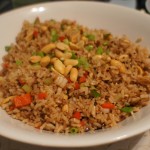
Cook rice and place aside. In the pan, heat oil as well as add mustard seeds, curry leaves, as well as sesame seeds. Take out from the heat whenever seeds splatter. Add roasted peanuts. You may also add almonds as well as cashews together with the peanuts. Add thinly-sliced potatoes as well as cook them well. Add tiny bits of cottage cheese as well as let them cook for the minute. Now add salt, red chili powder, turmeric powder, black pepper powder as well as chopped green chilies. Combine everything properly. Add rice and mix it all again. Garnish along with fresh coriander leaves and relish it along with fresh coconut chutney.
Peanuts Side Effects
Extreme peanuts consumption can lead to gas, heartburn, along with a suddenly developed food hypersensitivity to peanuts.
A peanut allergy is probably one of the most significant food allergy you are able to develop. Peanut allergy sufferers are at high-risk of significant allergy symptoms that may really be life-threatening, even when the first episode of peanut sensitivity was not serious. If you think you’ve got a peanut allergy, you ought to get examined by an allergist instantly and prevent all nut products till the allergy is determined as legitimate or not.
Most people who’ve peanut allergies are experiencing a reaction in a few minutes of touching or even eating a peanuts or perhaps a product that is made of peanuts. The reaction usually begins with a tingling feeling within the mouth accompanied by swelling on the face, throat and mouth. It can cause a suffocating feeling, an asthma attack, anaphylactic shock and death. Less serious reactions consist of rash, hives as well as upset stomach. In case you have a peanut allergy, you will need to carry an Epinephrine pen to counter any episodes while awaiting emergency assistance. In case you have a peanut allergy, there exists a good chance you also have a nut allergy which also includes all nuts. You will need to prevent all nut products, which includes pressed nut oils as well as any products processed on the same equipment as nuts. This particular allergy is really serious that even a tiny quantity of peanut product can result in a significant allergic attack. Many people outgrow peanut allergies, but many do not. If you’ve been identified as having a peanut allergy just as one infant, you have a better chance of outgrowing the allergy than if you developed the allergy after age three. Most kids and adults along with peanut allergies have the allergy for life. This particular allergy has become progressively common and it has become the subject of much research because of the severe nature of the condition.
References:
http://www.peanut-institute.org/
http://www.health.harvard.edu/blog/peanuts-linked-heart-longevity-benefits-pricey-nuts-201503057777
https://www.itis.gov/servlet/SingleRpt/SingleRpt?search_topic=TSN&search_value=26463#null
Comments
comments


